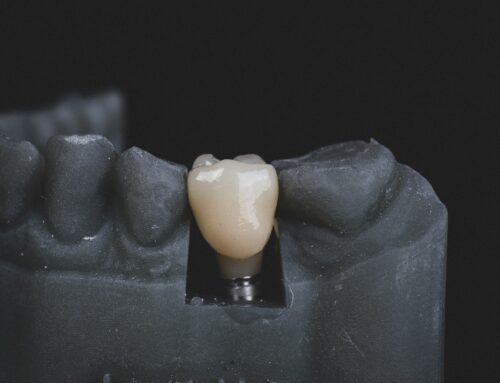Tooth decay causes many issues for millions of people. While Fluoride has proven to be an effective treatment, it has some limitations. Therefore, scientists are always looking for ways of improving treatments. Now, a research team has created a combined treatment that involves two different substances. This combination has the potential to be highly effective in preventing tooth decay.

Tooth decay is a very common ailment that causes many problems. Tooth decay causes cavities, toothache, tooth loss, and eventually causes damage to the extent where an infection forms.
For decades, fluoride-based treatments have been used to fight tooth decay. They have excelled, and have helped many people avoid significant dental problems.
But fluoride only has limited effectiveness. Therefore, research into more advanced methods of controlling tooth decay are needed. Now, new research has found a combination of substances could result in improved effectiveness against tooth decay [1].
Tooth decay
Tooth decay is caused by acids that are produced by bacteria. When food debris and sugar are in the mouth, bacteria breaks it down, which causes the acid.
If left untreated, tooth decay results in cavities, which require fillings. Over time, it can cause an infection, which requires a root canal treatment. Clearly, there are many issues caused by tooth decay.
The limitations of fluoride
As mentioned, for decades fluoride has been the main treatment for tooth decay. In fact, its use has been heralded by the US Centers for Disease Control and Prevention as one of healthcare’s biggest advancements over the last century [2].
However, fluoride only has limited effectiveness. The main issue is that fluoride struggles to sufficiently control the biofilm – which is a thick layer of microorganisms that can cause dental plaque [3]. Moreover, preventing the demineralization of tooth enamel is something else that fluoride only has limited effectiveness over.
Therefore, there is a need to have improved treatments against tooth decay. New research continues to be conducted into this. But it doesn’t always provide effective results.
The Research
The research was conducted by a team of researchers at the University of Pennsylvania’s (UPEN’s) School of Dental Medicine. Their findings were published in Nature Communications [1].
The research was instigated by the recent approval by the US Food and Drug Administration (FDA) of an iron oxide nanoparticle named Ferumoxytol [1]. This nanoparticle is capable of killing cavity-causing biofilms.
However, Ferumoxytol is not capable of stopping the demineralization of acid. So the researchers sought to find something that could complement Ferumoxytol [1].
They decided to use Stannous Fluoride. Stannous Fluoride is effectively a stronger version of fluoride, which provides extra benefits compared to fluoride. Although it also has some risks, such as potential staining of teeth [4].
Their research found that the combination of Ferumoxytol and Stannous Fluoride could provide a potent solution against dental caries [1].
The team used a mouse to test the combination of Ferumoxytol and Stannous Fluoride [1]. They aimed to see how a mouse with tooth decay and an existing microbiome would react.
The researchers found that when Ferumoxytol and Stannous Fluoride are combined, that Stannous Fluoride is stabilized [1]. Moreover, this significantly inhibits the accumulation of the biofilm and enamel damage.
Also, the researchers found that when Ferumoxytol was combined with Stannous Fluoride, that there was heightened catalytic activity [1]. This enabled the formation of a protective film on the tooth enamel, which can protect our teeth from damage.
Overall, the researchers found that this combination was able to inhibit bacterial growth whilst protecting the enamel [1]. Therefore, it was a highly successful combination.
Author comments
These findings are very promising and could have a very positive impact in the future. Therefore, the authors of the research were delighted with the results.
Hyun Koo of the UPEN’s School of Dental Medicine was the senior co-author of the study. Setting the scene, he remarked that “traditional treatments often come short in managing the complex biofilm environment” [3].
However, Koo says that their combined treatment “not only amplifies the effectiveness of each agent but does so with a lower dosage, hinting at a potentially revolutionary method for caries prevention” [3].
There is the need for further research to take place. For example, the team need to understand more about the exact mechanisms of interaction between Ferumoxytol and Stannous Fluoride [3].
While further research will be helpful, there are already many positives that have been developed by this study. Hopefully improvements in tooth decay treatment will appear soon!
Thinking points…
[1] When treating tooth decay, one of the most important elements in its treatment is early detection. When tooth decay is detected early, then it gives a dentist the best chance to successfully treat it. Therefore, remember to attend regular check-ups, as this will allow a dentist to spot any decay before it develops into a cavity. We recommend booking an appointment now!
[2] Tooth decay is something that affects so many of us. But it is avoidable! Remember to take good care of your teeth and gums, brushing twice per day and flossing daily. Additionally, try to limit the amount of sugary food and drink you consume. By having excellent oral hygiene, it should stave off the threat of tooth decay!
What we offer at Taradale Dental
Taradale Dental is a Calgary dental clinic that provide its patients with a wide range of dental treatment options and advice aimed at improving their oral health.
We advise our patients to attend our Calgary dental clinic at least twice per year for a regular dental check-up. At these check-ups, we provide a comprehensive review of a patient’s oral health. If any problems are detected, we have many treatments available. For example, these include cavity fillings and root canals. To strengthen your oral health, we recommend brushing your teeth at least twice a day and flossing regularly.
Here at Taradale Dental, we also have some cosmetic treatments available! These include dental implants, teeth whitening and Invisalign™! Many people find that these treatments have a positive impact on their appearance, confidence and self-esteem.
Moreover, all of our services at our Calgary dental clinic Taradale Dental are set in line with the Alberta Dental Fee Guide. This ensures transparent and fair pricing.
We hope to see you soon at our Taradale Dental clinic in Calgary! You can find out more about us by visiting our website https://taradaledental.ca.
References
[1] Huang, Y., Liu, Y., Pandey, N. K., Shah, S., Simon-Soro, A., Hsu, J. C., Ren, Z., Xiang, Z., Kim, D., Ito, T., Oh, M. J., Buckley, C., Alawi, F., Li, Y., Smeets, P. J. M., Boyer, S., Zhao, Z., Joester, D., Zero, D. T., Cormode, D. P., & Koo, H. (2023). Iron oxide nanozymes stabilize stannous fluoride for targeted biofilm killing and synergistic oral disease prevention. Nature Communications. 14 (6087). DOI: https://doi.org/10.1038/s41467-023-41687-8.
[2] Centers for Disease Control and Prevention. (1999). Achievements in Public Health, 1900-1999: Fluoridation of Drinking Water to Prevent Dental Caries. Morbidity and Mortality Weekly Report. 48 (41): p933-940.
[3] Magubane, N. (2023). Combined treatment takes a bite out of tooth decay. Available: https://medicalxpress.com/news/2023-10-combined-treatment-tooth-decay.html. Last accessed: 28th October 2023.
[4] Li, Y., Suprono, M., Mateo, L. R., Xhang, Y-P., Denis, J., D’Ambrogio, R., Sullivan, R., & Thomson, P. (2019). Solving the problem with stannous fluoride: Extrinsic stain. Journal of the American Dental Association. 150 (4): p38-46. DOI: https://doi.org/10.1016/j.adaj.2019.01.002.


